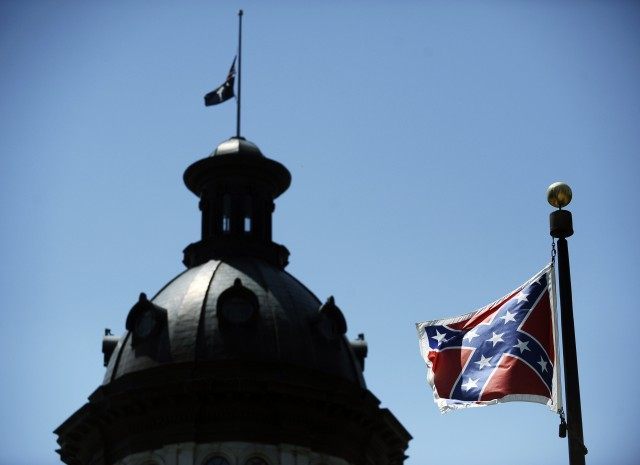Pastor Clementa Pinckney, who was slain in the massacre at the Emanuel A.M.E. Church in Charleston, South Carolina, where Dylann Roof killed nine black worshipers, voted for the Confederate flag’s display at the Statehouse on May 3, 2000, when he was a state senator.
The resolution Pinckney voted for was intended to be a compromise solution: to allow the Confederate flag to be moved from the dome of the State House to a flagpole on the south side of the Confederate Soldier Monument, thus still leaving it on the grounds of the Capitol Complex. Pinckney voted for the resolution despite the fact that the NAACP strongly opposed any compromise over the Confederate flag.
Pinckney voted for House Resolution 5028, which allowed S. 1266 to gain another reading by the House after consideration of Senate amendments. S. 1266 stated that it intended to: “AMEND CHAPTER 10, TITLE 1, CODE OF LAWS OF SOUTH CAROLINA, 1976, BY ADDING SECTION 1-10-10, SO AS TO PROVIDE FOR PERMANENT PLACEMENT OF THE UNITED STATES FLAG, THE SOUTH CAROLINA STATE FLAG, AND THE SOUTH CAROLINA INFANTRY BATTLE FLAG OF THE CONFEDERATE STATES OF AMERICA.”
Section 1-10-10 read:
As of 12:00 noon on effective date of this Act, and permanently thereafter, the only flags authorized to be flown atop the dome of the State House, in the chambers of the Senate and House of Representatives, and on the grounds of the Capitol Complex shall be as authorized in this section. The flags authorized to be flown atop the dome of the State House and in the chambers of the Senate and House of Representatives are the United States Flag and the South Carolina State Flag. As of 12:00 noon on effective date of this Act, the flag authorized to be flown at a designated location on the grounds of the Capitol Complex is the South Carolina Infantry Battle Flag of the Confederate States of America [the Battle Flag of the Army of Northern Virginia (General Robert E. Lee’s Army) the South Carolina, Georgia, Florida Department version]. This flag must be flown on a flagpole located at a point on the south side of the Confederate Soldier Monument, centered on the monument, ten feet from the base of the monument at a height of thirty feet.
During the debate over S. 1266, Sen. Robert Ford, who had been expelled from Grambling University for leading civil rights demonstrations and had campaigned earlier in his political career to remove the Confederate flag entirely, led the forces for compromise, incurring wrath from the NAACP. Ford said:
My philosophy in life is that if God put breath in every person, and as a Christian and as a human being, I have to respect and love them. During this process, my attitude about people changed and I began to accept a lot of people and what they believe in. That’s what America is about as well as South Carolina; that’s what I learned in the Civil Rights movement, how to accept people knowing that we have a lot of differences as black and white citizens. I’m proud of South Carolina today and of the Senate… With the vote today and with the vote a month ago with Dr. King’s birthday, and a Confederate Memorial holiday, I think South Carolina could set the tone for the rest of America on how black and white citizens can get along together
Senator Thomas disagreed, stating:
I voted against the final conference committee report on moving the Confederate Flag from the dome to the north side of the Capitol because I do not believe this action will resolve the issue. The votes have been divided along racial lines in the legislature and such a division will enable outside groups to continue to use the flag in a divisive and inflammatory way. Thus, nothing was resolved in this legislative action.
The Confederate flag first flew over the South Carolina Capitol dome in 1962, roughly one hundred years after the start of the Civil War. In 1994, the NAACP and black ministers called for a boycott of the state if the flag was left flying. The 2000 compromise meant that removing the flag would take a two-thirds majority in both the state House and Senate, but it is possible a simple majority in both houses may be enough to remove the flag. Governor Nikki Haley threatened to call an additional session of the legislature if they don’t remove the flag.

COMMENTS
Please let us know if you're having issues with commenting.